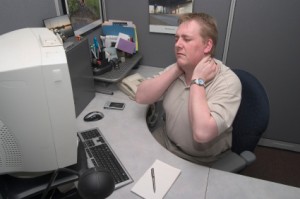April 14th, 2025

Earth Day is celebrated every year on 22 April. This tradition began in 1970 in response to growing environmental concerns after a large oil spill in Santa Barbara, California. And over the decades, Earth Day has become a global event. One that brings together over a billion people all over the world with one shared goal – raising awareness of environmental issues and pursuing a sustainable future.
For businesses and organizations, Earth Day also offers an opportunity to raise awareness and foster environmental responsibility within the workplace. In this article, we explore the role of offices and workplaces generally in broader sustainability efforts, discuss the benefits of embracing Earth Day with practical eco-friendly practices, and give some ideas on how to organize engaging office events to celebrate this special date.
The Role of Office Spaces in Sustainability
Office environments significantly influence environmental outcomes. According to the World Resources Institute, 6.4% of global greenhouse gas emissions are emitted by commercial buildings alone, including offices.
And although energy consumption contributes 60% of an office’s total carbon footprint, there are other office-related activities that can also be targeted to achieve effective sustainability measures during Earth Day and beyond.
Read the rest of this entry »
Tags: Business Advice, CSR, Earth Day, employee engagement, Greener Offices, Office Organization, Office Talk, Office-tips, sustainability
Posted in Business Advice, CSR, Eco Matters, Environment, Office Health, Office Organization, Office Talk | No Comments »
Add to: Del.icio.us | Digg
February 6th, 2025

The gradual rollback of remote work arrangements, which were put in place as a short-term fix to keep businesses operating during the height of pandemic lockdowns, has now given rise to one of the most contentious issues in the employment arena. To return to the office, or not to return, that is the question.
Some prominent businesses like Spotify are steadfastly upholding flexible work-from-home policies, stating resoundingly that “remote staff aren’t children.” Other tech giants, however, such as Amazon and iPhone challenger, Nothing, have made U-turns on their previous work-from-home policies, implementing return-to-office policies across the board for all corporate employees.
Taking their lead from the tech heavyweights, return-to-office (RTO) mandates are now widespread for businesses throughout the United States. And with the new administration declaring an RTO mandate for all federal employees of government offices throughout the country, the tide well and truly seems to be shifting against remote, hybrid, and even flexible work schedules.
Drastic Shift: From Widespread Remote Work to Full RTOs
The prestige and dominant market power of big-name tech brands helps ensure they can continue to attract top talent in droves, regardless of any contentious mandates like a full RTO. This will remain true even despite the attrition of former remote hires who were attracted by the flexible work location policies of a few short years ago.
Read the rest of this entry »
Tags: employee engagement, Employee Preferences, Employment, Flexible Offices, office amenities, Office Market Statistics, Return to Office, RTO, Work Perks, workplace culture, Workplace Regulations
Posted in Business Advice, Employee Recognition, Employment and Worklife, Market Overviews, Office Amenities, Office Health, Office Planning, Office Relations, Office Space Forecasts and Trends, Office Talk, Remote Workers, Trends and Statistics | No Comments »
Add to: Del.icio.us | Digg
May 29th, 2023
The concept of walkability is becoming increasingly discussed in urban planning and design environments, as it impacts well-being, health, livability, and real estate economics. In this article, we discuss the walkability trend in relation to the office market, and explore its benefits, as well as the amenities, data, and calculations used to generate a property’s walking score.

About the concept
In the United States, walking scores for real estate were first published by WalkScore, a company developed in the mid 2000s by former Microsoft developers that understood the importance of walkability and its connection to quality of life.
These WalkScore founders developed a tech-supported system that generated walkability scores for any given postcode. The overall score shows how easy and convenient it’s to live or work in a location without needing to drive or use mass transit.
Initially, walking scores were one of the criteria used to choose a residential property, but eventually they were applied to all kinds of real estate, including offices. Nowadays, it’s common to see walkability scores displayed in real estate listings. As time went by and people became more familiar with the importance of walkability and its connection to real estate, different walkability tools and calculators appeared in the market.
How do walking scores affect real estate economics?
There’s a strong correlation between walkability and commercial real estate economics. Researchers analyzed property price trends over a decade and uncovered wide gaps in price increases between highly walkable CBD real estate (which experienced 125% price increases) and those in car-dependent areas, where prices only rose by 20%.
Read the rest of this entry »
Tags: 2023, benefits, walk score
Posted in 2023, Office Health | No Comments »
Add to: Del.icio.us | Digg
January 31st, 2023

The use of color in an office space has a significant impact on the atmosphere of the workplace and on those that occupy it. The right combination of colors can enhance the overall design, improve the functionality of the space, and create a more positive and productive work environment.
According to the Institute for Color Research, within 90 seconds of first viewing, people make a subconscious judgement about a space or a product, and between 62% and 90% of that evaluation is based only on color. Additionally, in a ground-breaking study, the University of Texas discovered that when presented with different colors, varying brain responses can affect employee productivity and attitude.
In this article, we will discuss the power of color in offices by delving into the evidence surrounding color psychology, and the impact lighting and materials have on color, and how this should combine to be applied to office design. So, after reading, office interior designers, occupiers and landlords should gain some insight into how to use color to enhance the overall design of spaces, and improve the functionality and productivity of the office environment.
Read the rest of this entry »
Tags: 2023, Business, Business Advice, commercial property, Commercial Real Estate, Office Health, Office Organization, Office Space, Office-tips
Posted in Office Health, Office Renovation | No Comments »
Add to: Del.icio.us | Digg
September 19th, 2014
 Who would have thought that the simple act of sitting could be so dangerous to a person’s health? But more and more medical researchers are releasing information indicating that sitting for long periods of time can cause a variety of physical ailments. Since many Americans sit for hours a day at their jobs, this kind of information can be both enlightening and frightening. There is a lot to be said for getting up out of your chair and stretching every once in a while.
Who would have thought that the simple act of sitting could be so dangerous to a person’s health? But more and more medical researchers are releasing information indicating that sitting for long periods of time can cause a variety of physical ailments. Since many Americans sit for hours a day at their jobs, this kind of information can be both enlightening and frightening. There is a lot to be said for getting up out of your chair and stretching every once in a while.
Organ Troubles
When you sit for hours and hours, your blood flow slows and creates problems for several of your internal organs. Since the blood is not flowing, that means that fats can accumulate in your arteries and lead to issues such as high blood pressure and heart disease. When your muscles are idle from sitting, they tend to ignore the insulin being created by your pancreas. This causes the pancreas to keep pumping out insulin and, over time, can lead to diabetes.
Muscle Atrophy and Distortion
As you would expect, the muscles in your back, legs, and abdomen suffer when you sit for hours and hours. But what you probably did not know is that your hip and thigh muscles are also getting soft and that creates problems for your hip joints. Your glutes also get soft and that can put extra strain on your spine. Read the rest of this entry »
Tags: Office Health, Office Organization
Posted in Office Health | No Comments »
Add to: Del.icio.us | Digg
March 4th, 2014
 It is easy to take health and safety in the office for granted, until someone gets injured in an accident that could have been prevented. The Occupational Health & Safety Administration, also known as OSHA, has a comprehensive set of guidelines that every office can follow to keep workers safe.
It is easy to take health and safety in the office for granted, until someone gets injured in an accident that could have been prevented. The Occupational Health & Safety Administration, also known as OSHA, has a comprehensive set of guidelines that every office can follow to keep workers safe.
When it comes to office safety, there are some key areas to consider. Your office desks, cubicles, and office accessories all need to be treated with the proper respect if you are going to avoid accidents and injuries. The worst mistake you can make is assuming that you are safe from danger just because you are in an office.
Read the rest of this entry »
Tags: Business Advice, Employee Rights, Office Health
Posted in Business Advice, Employee Rights, Office Health | No Comments »
Add to: Del.icio.us | Digg
February 7th, 2013
 Going to work each day can become a difficult task if you are constantly battling with illnesses. Staying healthy in the office is an important part of work, and there things that you can do that will help you stay as healthy as possible. A lot of employees become tired during the day or they may feel weak and lethargic. While these are common problems, there are ways to beat them. Following these tips may offer more insight to you regarding this subject, and this might help you with your battle of staying healthy in the office.
Going to work each day can become a difficult task if you are constantly battling with illnesses. Staying healthy in the office is an important part of work, and there things that you can do that will help you stay as healthy as possible. A lot of employees become tired during the day or they may feel weak and lethargic. While these are common problems, there are ways to beat them. Following these tips may offer more insight to you regarding this subject, and this might help you with your battle of staying healthy in the office.
The Importance of Good Posture
Read the rest of this entry »
Tags: Office Health
Posted in Office Health, Office Talk | No Comments »
Add to: Del.icio.us | Digg
June 7th, 2010
 Looking after your back
Looking after your back
Sitting at your desk all day can lead to back problems, especially if you have bad posture. There are some things you can do to help relieve the aches and pains associated with prolonged sitting.
Good Posture
When sitting at your desk, what is your posture like? Do you slouch over while you work? Sitting straight is very important, as is having back support. Your shoulder blades, lower and mid back should all make contact with the upright support of your office chair.
Read the rest of this entry »
Posted in Office Health, Uncategorized | No Comments »
Add to: Del.icio.us | Digg
October 13th, 2009
 A report from the Substance Abuse and Mental Health Service Administration has revealed which occupations have higher levels of smokers. Of all the full time employees in the United States aged between 18 and 64, 28% had smoked cigarettes in the previous month. Food-service workers came in highest with 45% having smoked during that same period. The second highest groups are construction workers and miners, coming in at 42.9%.
A report from the Substance Abuse and Mental Health Service Administration has revealed which occupations have higher levels of smokers. Of all the full time employees in the United States aged between 18 and 64, 28% had smoked cigarettes in the previous month. Food-service workers came in highest with 45% having smoked during that same period. The second highest groups are construction workers and miners, coming in at 42.9%.
The study also showed that people who work in training, education and library fields smoke the least, with only 12.3% having lit up in the previous month.
Read the rest of this entry »
Tags: Employment, Office Talk
Posted in Employment Regulations, Office Health | No Comments »
Add to: Del.icio.us | Digg
September 17th, 2009
 Sitting at a desk for nine hours a day is detrimental to your figure and it can be very easy to gain excess weight by eating unhealthily or snacking unnecessarily at work. All your willpower will be out the window once someone brings out the chocolates, cookies and potato chips. The hardest part of the day to resist these temptations is around 2pm, when your blood sugar levels have dipped. There are ways to combat the ‘office spread’ and here are some ideas and tips to help you on your way.
Sitting at a desk for nine hours a day is detrimental to your figure and it can be very easy to gain excess weight by eating unhealthily or snacking unnecessarily at work. All your willpower will be out the window once someone brings out the chocolates, cookies and potato chips. The hardest part of the day to resist these temptations is around 2pm, when your blood sugar levels have dipped. There are ways to combat the ‘office spread’ and here are some ideas and tips to help you on your way.
1. Eating breakfast before you go to work.
Although you may think that by skipping a meal you will lose weight, this is counter productive. Eating healthily first thing sets your metabolism for the day, and helps you to steer clear unhealthy snacks mid morning when your body craves sustenance.
2. Stay away from the doughnuts, muffin baskets and candy dishes.
Read the rest of this entry »
Posted in Office Health | No Comments »
Add to: Del.icio.us | Digg








 A report from the Substance Abuse and Mental Health Service Administration has revealed which occupations have higher levels of smokers. Of all the full time employees in the United States aged between 18 and 64, 28% had smoked cigarettes in the previous month. Food-service workers came in highest with 45% having smoked during that same period. The second highest groups are construction workers and miners, coming in at 42.9%.
A report from the Substance Abuse and Mental Health Service Administration has revealed which occupations have higher levels of smokers. Of all the full time employees in the United States aged between 18 and 64, 28% had smoked cigarettes in the previous month. Food-service workers came in highest with 45% having smoked during that same period. The second highest groups are construction workers and miners, coming in at 42.9%. Sitting at a desk for nine hours a day is detrimental to your figure and it can be very easy to gain excess weight by eating unhealthily or snacking unnecessarily at work. All your willpower will be out the window once someone brings out the chocolates, cookies and potato chips. The hardest part of the day to resist these temptations is around 2pm, when your blood sugar levels have dipped. There are ways to combat the ‘office spread’ and here are some ideas and tips to help you on your way.
Sitting at a desk for nine hours a day is detrimental to your figure and it can be very easy to gain excess weight by eating unhealthily or snacking unnecessarily at work. All your willpower will be out the window once someone brings out the chocolates, cookies and potato chips. The hardest part of the day to resist these temptations is around 2pm, when your blood sugar levels have dipped. There are ways to combat the ‘office spread’ and here are some ideas and tips to help you on your way.